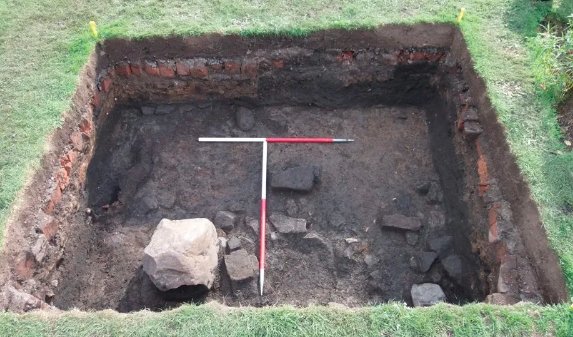Football, known as soccer in the United States, is the world’s most popular sport, with millions of fans across the globe. For generations, England has proudly carried the title of the birthplace of modern football. But new archaeological discoveries in southern Scotland suggest that the origins of the “beautiful game” may be far older—and distinctly Scottish—than previously believed.
A Historic Claim: Football Was Born in Scotland
Historian and sports archaeologist Ged O’Brien has uncovered evidence that challenges the long-held belief that England is the birthplace of modern football. According to O’Brien, a football pitch discovered in Kirkcudbrightshire county, Scotland, dates back to the 17th century, making it the first known field used to play a version of the modern game. This discovery, if proven true, places the origins of football decades before England’s formal recognition of the sport and centuries before the rise of professional clubs.

The Key to the Discovery: A Letter from Reverend Samuel Rutherford
The story of Scotland’s claim to football’s origins begins with a letter from Reverend Samuel Rutherford, who served as the minister at Anwoth Old Kirk between 1627 and 1638. Rutherford expressed his frustration over parishioners playing football on Sabbath afternoons at Mossrobin Farm, located just west of Gatehouse of Fleet, near the Solway Firth.
To prevent further play, Rutherford reportedly ordered a line of stones to be placed across the field—an early form of a “no ball games” sign. This letter, written more than 350 years ago, provides a rare glimpse into the recreational life of 17th-century Scotland and hints at the existence of a football field long before the establishment of modern clubs.
Archaeological Evidence: A Line of Stones
Inspired by Rutherford’s letter, O’Brien and his team of archaeologists began investigating the area around Mossrobin Farm. Their efforts led to the discovery of a straight line of 14 large stones positioned across the field. Soil analysis indicates that these stones were arranged during the 17th century, around the same time Rutherford expressed his concerns about the football games.
This archaeological find provides rare physical evidence of an organized playing field in a period when written records of such activities were scarce. O’Brien believes the discovery is a game-changer, revealing a Scottish link to the origins of football that predates the English version of the sport.
Challenging the English Narrative
O’Brien’s findings challenge the traditional narrative that modern football evolved from the public school games played in 19th-century England. He argues that the evidence unearthed in Scotland suggests that football was already being played as a form of organized recreation in Scotland long before it became formalized in England.
“The importance of Rutherford’s letter cannot be overstated,” O’Brien said in an interview with The Times. “This is one of the most important sentences I have ever read in football history, because it specifically identifies the exact place the football pitch was.”
The Impact of the Discovery
If confirmed, this discovery would have profound implications for the history of football, potentially rewriting the origins of the sport and shifting the narrative about where the game truly began. O’Brien’s work highlights how Scotland played a key role in the early development of football, which would eventually evolve into the global phenomenon it is today.
The unearthing of the Mossrobin Farm football pitch also raises questions about other early forms of the game that may have existed across Europe, further enriching our understanding of how football developed into the sport we know and love.
As the debate continues over the true birthplace of football, O’Brien’s findings offer a compelling argument that Scotland might just have been the first to kick off the world’s most popular sport.


















